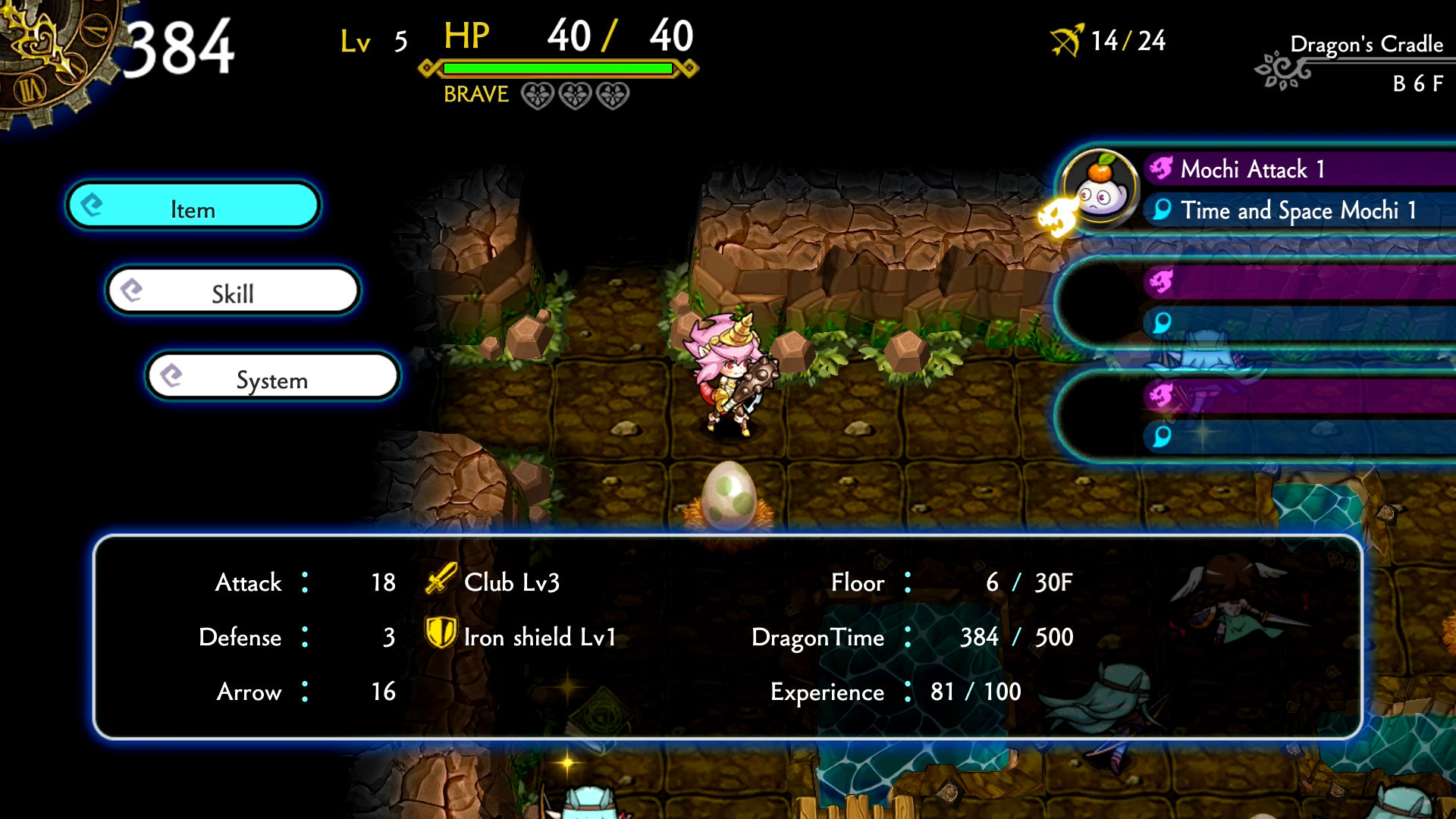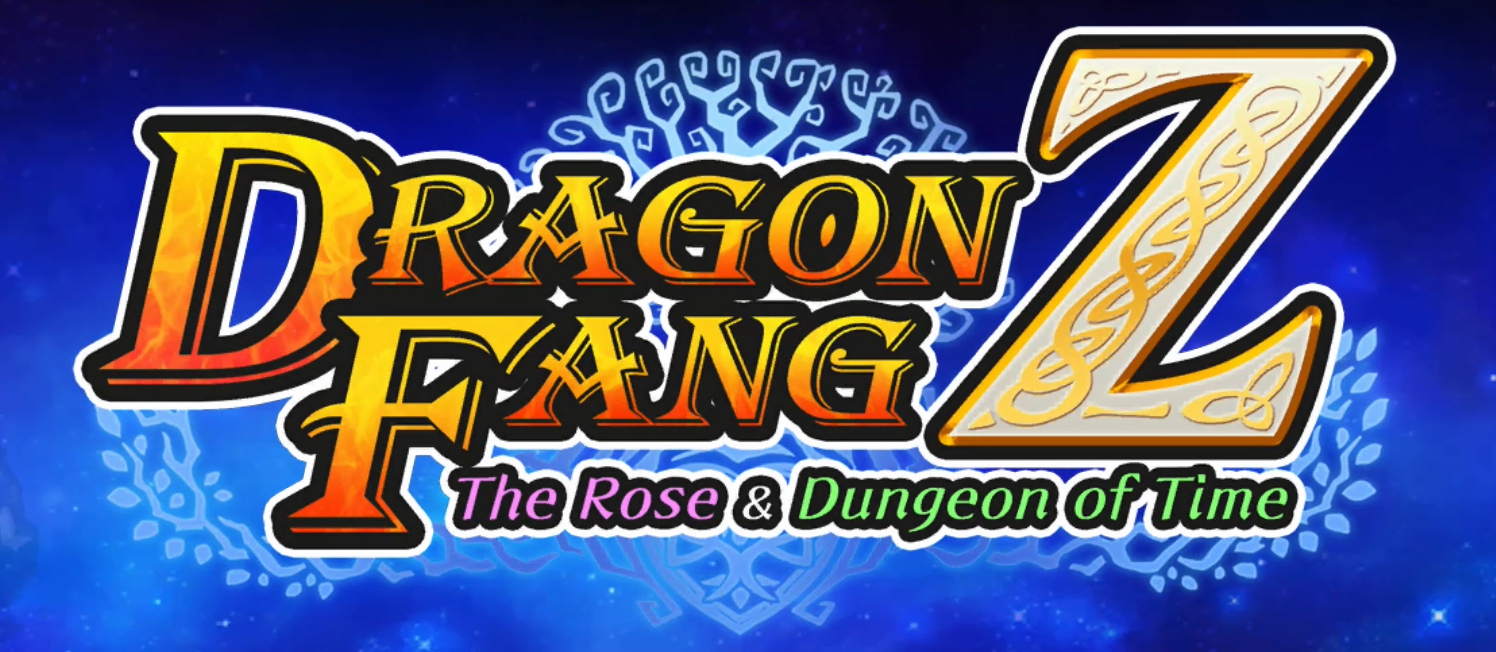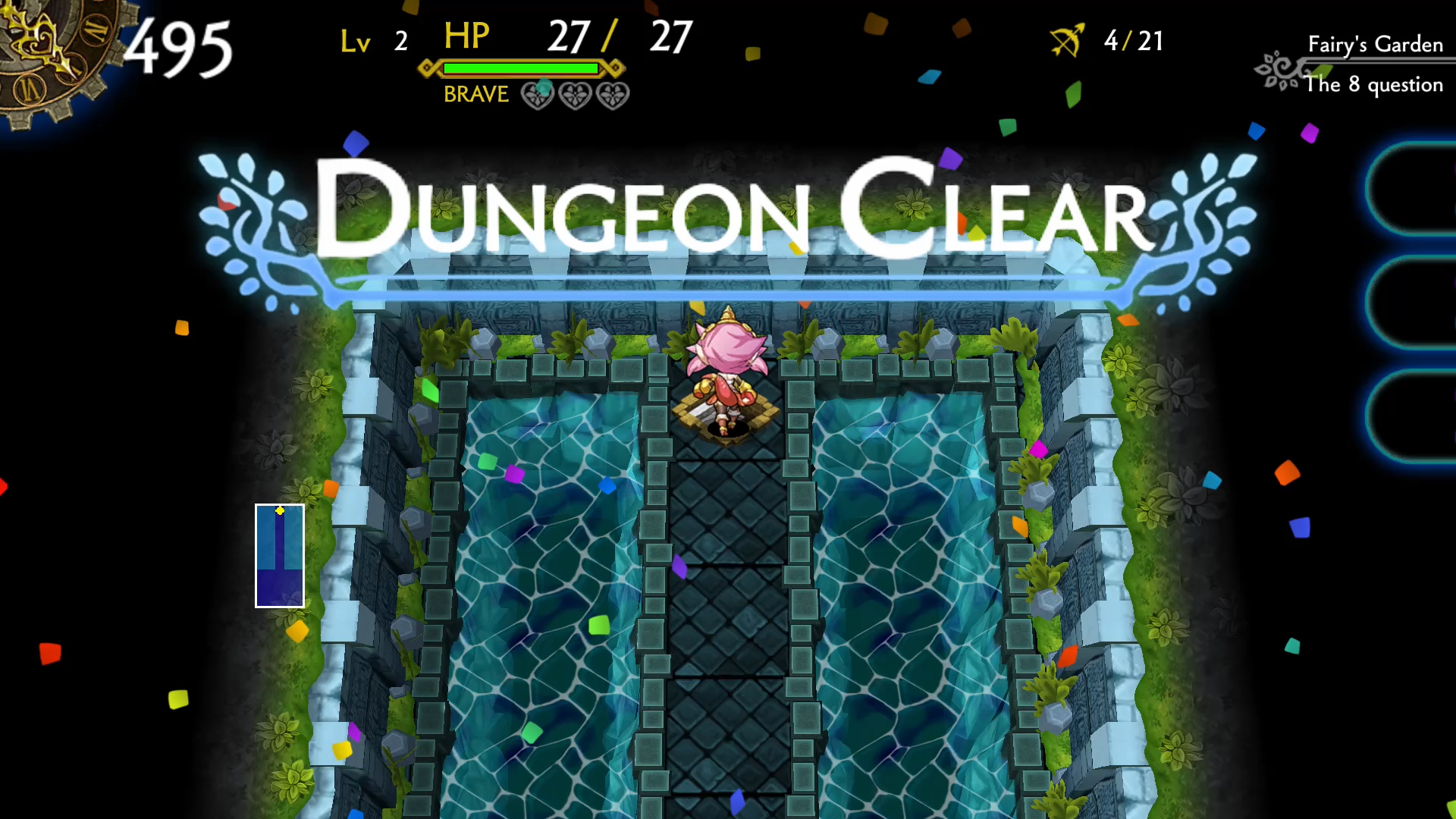In the Awesome Games Done Quick 2018 marathon, it’s easy to see that random number generation, or RNG, is a speedrunner’s worst nightmare. The elegant runs on display showcase the creativity of gamers who expertly navigate complex game mechanics. Playing Dragon Fang Z while watching AGDQ made for an interesting experience—as a dungeon-crawling, turn-based, procedurally generated game, it oozes with the charm and frustrations of RNG.
Dungeon Crawling Goodness
Dragon Fang Z: The Rose & Dungeon of Time, (Switch, Xbox, PS4, and PC in 2018) is the sequel to Dragon Fang (3DS, iOS, and Android), a largely overlooked 2016 tactical dungeon-crawler. In the game, players take on the role of Rose, a half-dragon, half-human treasure hunter accompanied by her fairy companion…Fairy.

At the moment, Dragon Fang Z is gathering some critical attention because of its half-botched localization. While the game has been slightly patched since release, the quirky dialogue and menu text still show the signs of a rushed translation for Western release. Thankfully, most of the translation issues add some interesting character to the game and don’t get in the way of the mechanics.
Rose and Fairy find themselves trapped in a mysterious dungeon where they are forced to simultaneously hunt for a precious treasure and find a way home. Whenever she (inevitably) dies, Rose is transported back to the lobby of the dungeon and begins again, except with no weapons or items. It’s possible to save these objects in randomly found “Warehouse” boxes for later runs, but the game warns you that you may not always be able to retrieve the high-level sword you stowed away—just to keep things interesting!

Stumbling in the Dark (of Bad Translation)
Dungeons are procedurally generated, but at set intervals you’ll encounter new characters who tend to offer you some advice before heading back to the dungeon lobby to greet you upon your next death. Sometimes their advice is helpful, and sometimes it’s mistranslated gibberish.
I’ll be honest; it took me awhile to get into this game, and in my first playthrough I actually thought the pathing was broken, only to realize that Rose can move diagonally. In other words, a lot of the learning process involves trial and error.
But there’s a surprising amount of depth to be found in the game mechanics—unfortunately the player is mostly left to figure out these mechanics on their own, until they visit a series of puzzle dungeons that also unlock early in the game. The puzzle dungeons offer quite a bit of fun as you get to experiment with a limited set of resources to make your way through a fine-tuned static gauntlet. However, even with these careuflly designed challenges, I didn’t understand the importance of the “Brave” point system until looking for tips online.
Figure out the interlocking parts—earning Brave points, using wands, equipping Fangs, throwing objects—and suddenly the randomly generated dungeons become a lot more manageable. Sure, there are times when you’ll wander into an overpopulated monster lair with little more than your fists, a potion, and some special abilities that require careful Brave point resource management, but that only means you’ll have to think creatively.
Come On! Just One More Try
Even at it’s most frustrating, Dragon Fang Z offers a lot of replayability and has that “just one more try” hook. While the pace tends to be a little slower than games like Enter the Gungeon or The Binding of Issac—and tends to rely a little more on the gods of RNG than outright skill—spend enough turns in the Dungeon of Time and you’ll learn how to get creative with all the randomized equipment you find. A situation might seem hopeless, but there’s usually a way to triumph if you’re patient and inventive.
If there’s one shortcoming to this game, it might be that there are a few too many systems to keep in mind as you’re scouring the dungeon floors. If you spend your time carefully locating all the useful items and maneuvering enemies into positions that grant Brave point bonuses, you might run short of DragonTime—a resource that decreases with each turn—and find yourself back at the start. However, if you rush blindly ahead, you won’t have the Brave points to use your heavy-hitting Specials, and the first time you run into an over-leveled enemy, you’ll be downed in one hit.


Pros
- Great replayability and an addictive game loop
- A deep, tactical system with creative combat possibilities
Cons
- Poor localization, while mostly quirky, has the potential to confuse players
- Cheap-looking animation assets: characters are essentially stuck in a 2-frame walk animation
- The best strategy can’t always save you from a bad roll
Conclusion
If you’re a fan of dungeon-crawling, turn-based combat, and lots of RNG, then Dragon Fang Z: The Rose & Dungeon of Time offers quite the challenge. However, if you’re looking for a polished experience, this may not be the game you’re looking for.




